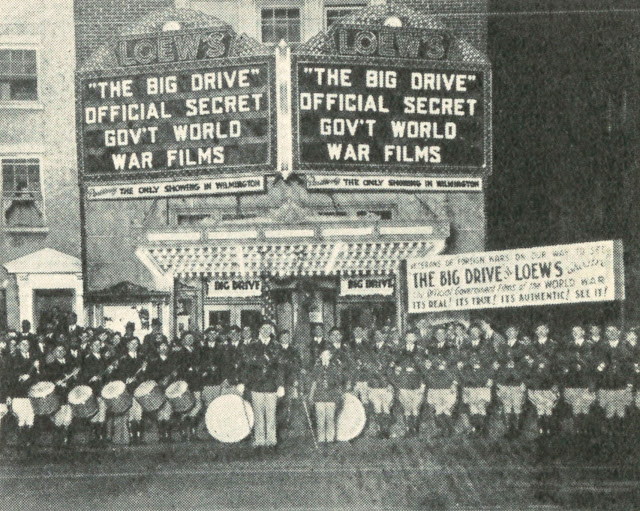One Hell Of A Great War 1932 Revisited
 |
| Wilmington, Delaware's V.F.W. Supplies Uniform and Drum Corps For Downtown Bally Parade |
The Big Drive (1932) Is Precode's Censor-Proof Bloodbath
Hell broke loose in December 1932 when indie shockumentary The Big Drive went Over The Top to show a public what ferocity we and allies dealt during the Great War over a decade past. If this wasn't precode in a rawest way, I don't know what was, but like Bring 'Em Back Alive and others of jungle derivation, little is mentioned of these buried offshoots. Compiler of The Big Drive was A.L. Rule, a WWI vet who was said to have scoured worldwide vaults to gather "withheld till now" proof of man's inhumanity to man. The menu was blissfully simple to sell: Glory and Hell ... Blood and Mud ... Clubbing ... Stabbing. Who wouldn't want bountiful meal of that? In fact, enough did to immediately call forth imitators. Within weeks of The Big Drive came Forgotten Men, while ahead of it was Four Aces, which didn't catch gore wave mostly for a title indistinct as to content. The Film Daily (1/23/33) noted The Big Drive's "surprise business," showmen in the know saw unbound violence as the catnip, and where you couldn't get away with such let-loose savagery in features, there was no stopping fact-based recount of horrors in battle ... how else to warn society against future conflagration? ("Strong propaganda against war" said The Film Daily's approving review)
 |
| NYC's Mayfair Theatre Barb-Wires Marquee To Slam Over Blood-Guts Content |




Comments
Post a Comment